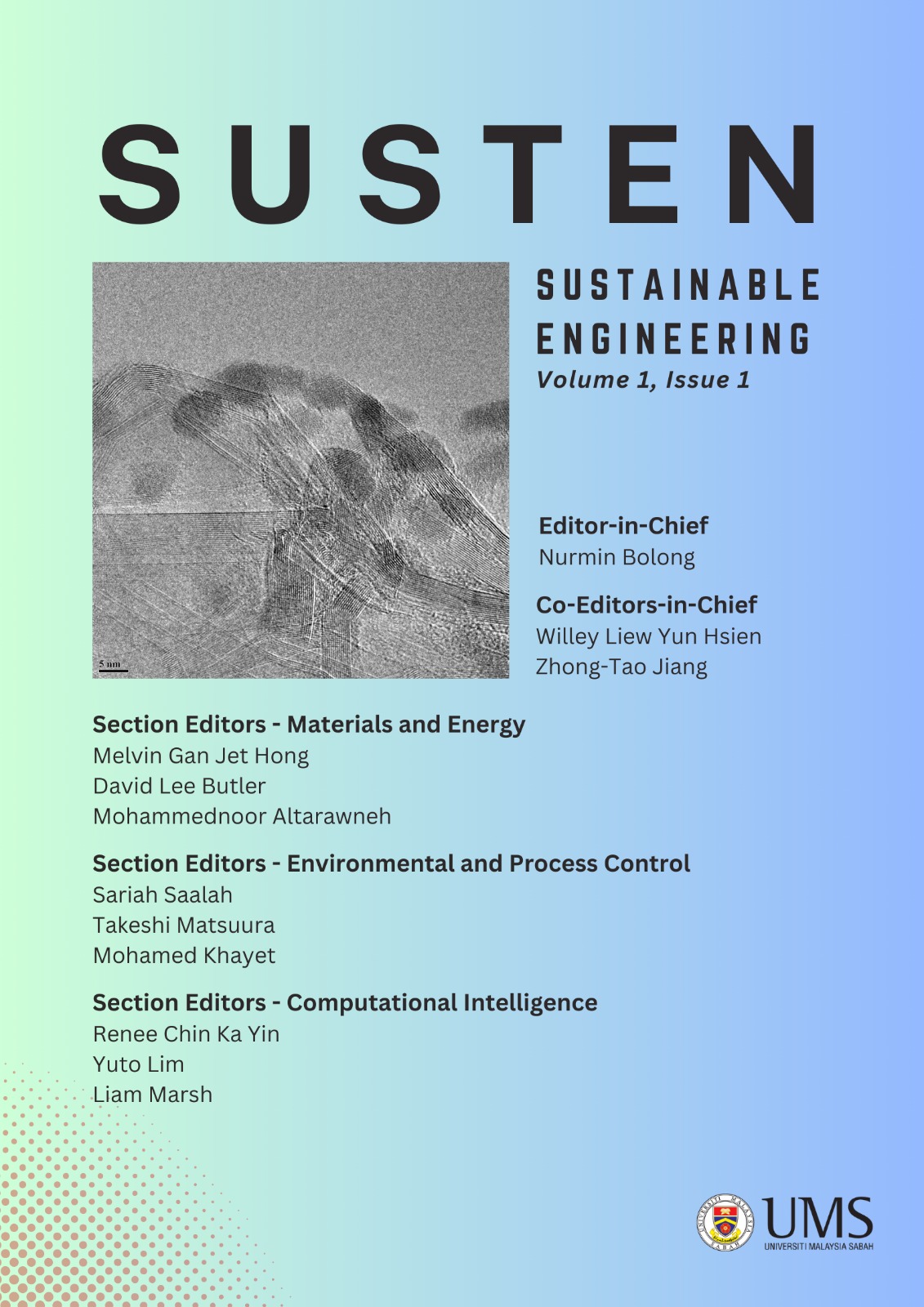Oil extraction from rice bran using conventional and bio-based solvents
Oil extraction from rice bran using conventional and bio-based solvents
DOI:
https://doi.org/10.51200/susten.v1i1.5144Keywords:
rice bran: extraction; n-hexane; isopropanolAbstract
Rice bran is the outer layer of the rice grain, rich in essential nutrients and bioactive compounds. It is a valuable by-product used for various purposes, including the extraction of rice bran oil (RBO) known for its health benefits. This study focused on extracting oil from the nutritious rice bran using both conventional solvent (n-hexane) and bio-based solvent (isopropanol) for comparison under diverse conditions. The RBO yields were analysed at different temperatures of 40oC, 50oC, and 60oC, with bran-to-solvent ratios of 1:3, 1:5, and 1:7, and extraction times of 2, 4, and 6 hours. The highest yields achieved were 12.4% for n-hexane at 60oC, 1:7 ratio, and 6 hours, and 9.76% for isopropanol at 60oC, 1:7 ratio, and 4 hours. The extracted oil underwent comprehensive physical analysis, including density, acid value, free fatty acid, and iodine value test. The physical analysis revealed density values of 0.867 g/mL for n-hexane and 0.866 g/mL for isopropanol. Acid values were 21.48 mg KOH/g (n-hexane) and 26.90 mg KOH/g (isopropanol). Free fatty acid percentages were 10.74% (n-hexane) and 13.45% (isopropanol). Iodine values were 65.48 mg (n-hexane) and 60.40 mg (isopropanol). The collected data were analysed using response surface methodology (RSM) to optimize the extraction condition, predicting the highest yield at 60oC, with a bran-to-oil ratio of 1:5 parts solvent, and an extraction time of 6 hours. Statistical analysis confirmed the significance of the optimization model (p < 0.05). Overall, this study provided valuable insights, advancing more efficient and effective RBO production methods.
Keywords: rice bran; extraction; n-hexane; iso-propanol






